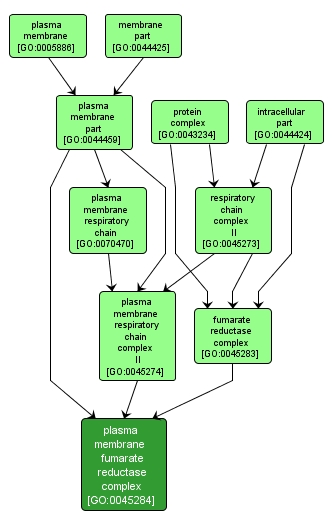| Desc: |
A membrane-bound flavoenzyme complex consisting of four subunits, A, B, C, and D. A and B comprise the membrane-extrinsic catalytic domain and C (InterPro:IPR003510; InterPro:IPR00224) and D (InterPro:IPR003418) link the catalytic centers to the electron-transport chain. In some species, the complex has only three subunits, and in these cases, there is only one membrane anchor instead of two. This family consists of the 13 kDa hydrophobic subunit D. This component may be required to anchor the catalytic components of the fumarate reductase complex to the cytoplasmic membrane. Fumarate reductase couples the reduction of fumarate to succinate to the oxidation of quinol to quinone, in a reaction opposite to that catalyzed by the related complex II of the respiratory chain (succinate dehydrogenase-(ubiquinone)). Examples of this component are found in Bacterial species. |














